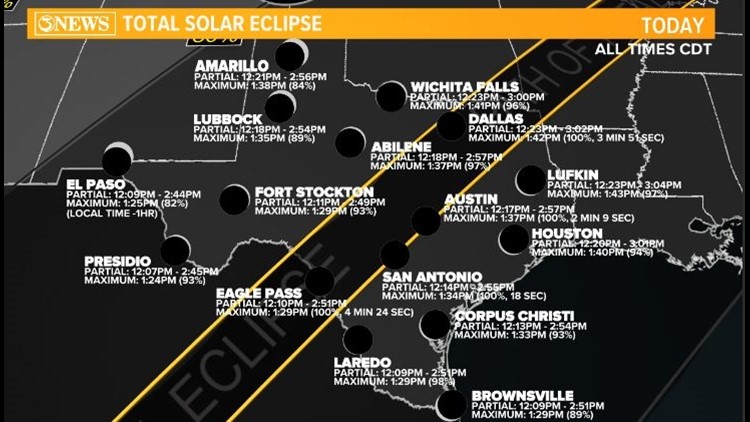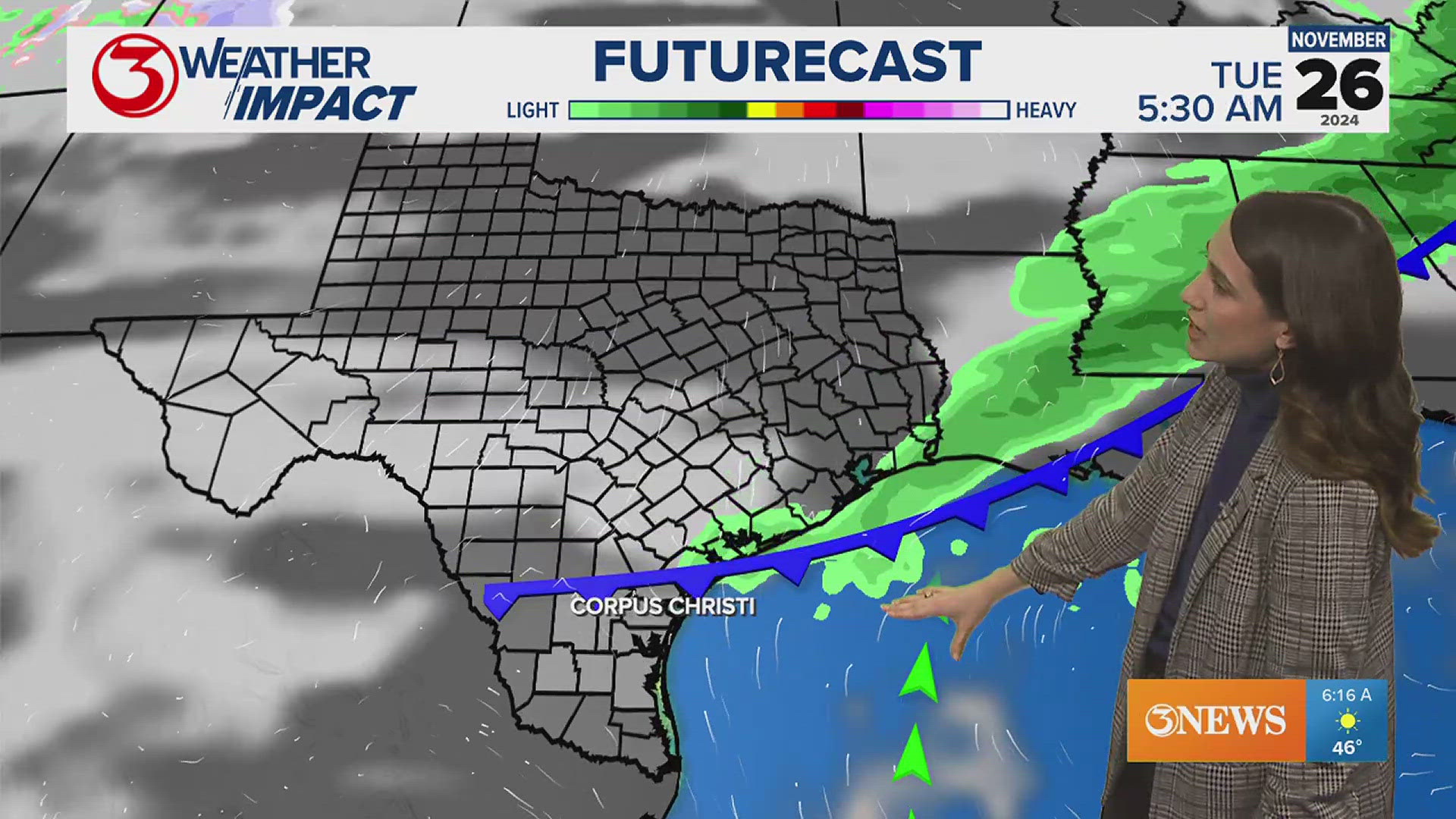Today's total eclipse even crosses the path of last year's annular eclipse.
Take a look back at photos in our gallery from last year's annular eclipse.

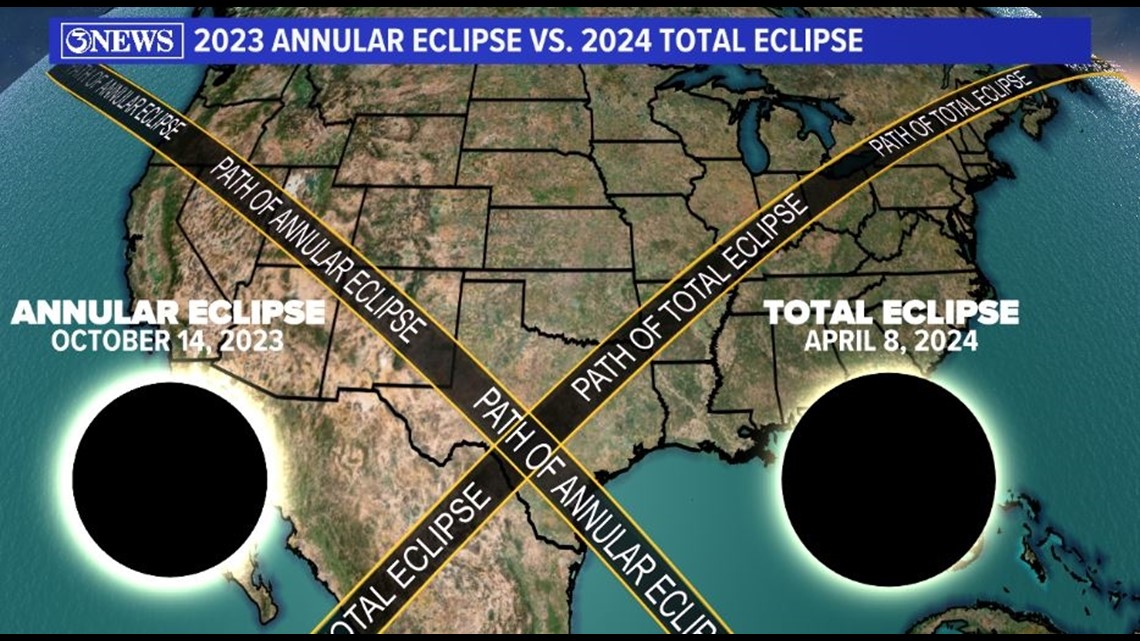
An eclipse happens when the moon passes between the Earth and the Sun, blocking some or all of the Sun from our view. There's a few different types of eclipses - like the annular eclipse we experienced last October, which blocked most of the Sun - but the one happening this April is a total eclipse.
The difference between an annular solar eclipse and a total solar eclipse is due to the moon's position. In an annular eclipse, the moon is at its farthest point in its orbit away from Earth. Since the moon is farther away, it appears smaller, and the visible edge of the Sun creates a "ring of fire" effect.
Because the Sun is not completely blocked in an annular eclipse, it is not safe to look directly at the Sun at any time without specialized eye protection made for solar viewing. (A camera, binoculars, telescope, and regular sunglasses don't count.)
During the 2023 annular solar eclipse, about 90% of the Sun was blocked over Corpus Christi, according to NASA.
In a total eclipse, the moon is close enough to Earth that it blocks the Sun totally. There's no ring of fire. The only thing we can see is the Sun's corona, its outer atmosphere.

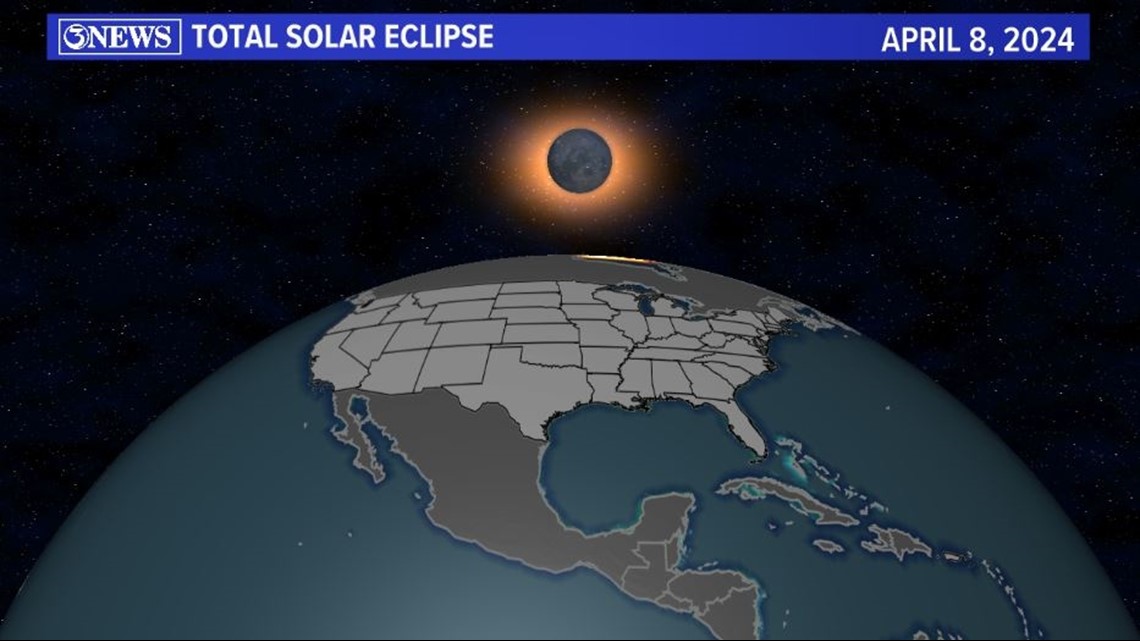
The path of totality is where the moon's shadow passes over the Earth's surface - this is where the total eclipse will be visible (weather-permitting, of course). Its width ranges from 108 to 122 miles wide, according to NASA. Most locations will be able to see the total eclipse for three to four minutes.
Major cities across the United States within the path of totality include San Antonio, Austin, Dallas, Little Rock, Indianapolis, Cleveland, and Buffalo. These cities will experience night in the middle of the day, as light from the Sun is completely blocked by the moon.
Even though the Sun is totally blocked in a total eclipse, it's only during the maximum eclipse time within the path of totality that you can view the eclipse without specialized eclipse glasses. During the partial eclipse, you'll need to be wearing your protective eyewear - that goes for everyone, everywhere. Hopefully you've still got your eclipse glasses from last October!

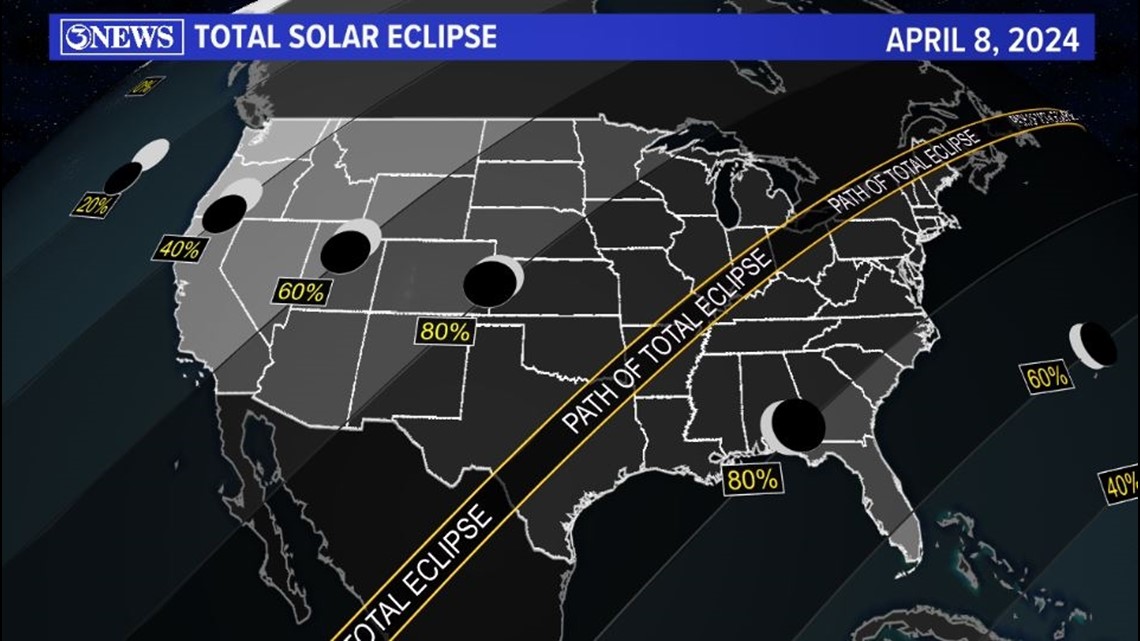
In Texas, the partial eclipse begins a little after 12:00PM for border towns and cities and ends just after 3:00PM for the northern half of the state.
Eagle Pass will have one of the longest viewing times in the state (and country) with nearly four and a half minutes of totality, whereas San Antonio will only experience 18 seconds of totality.
Most locations through the Lone Star State will experience totality for three and a half to four and a half minutes. The longer viewing times will be on the southwestern side of the eclipse's path.

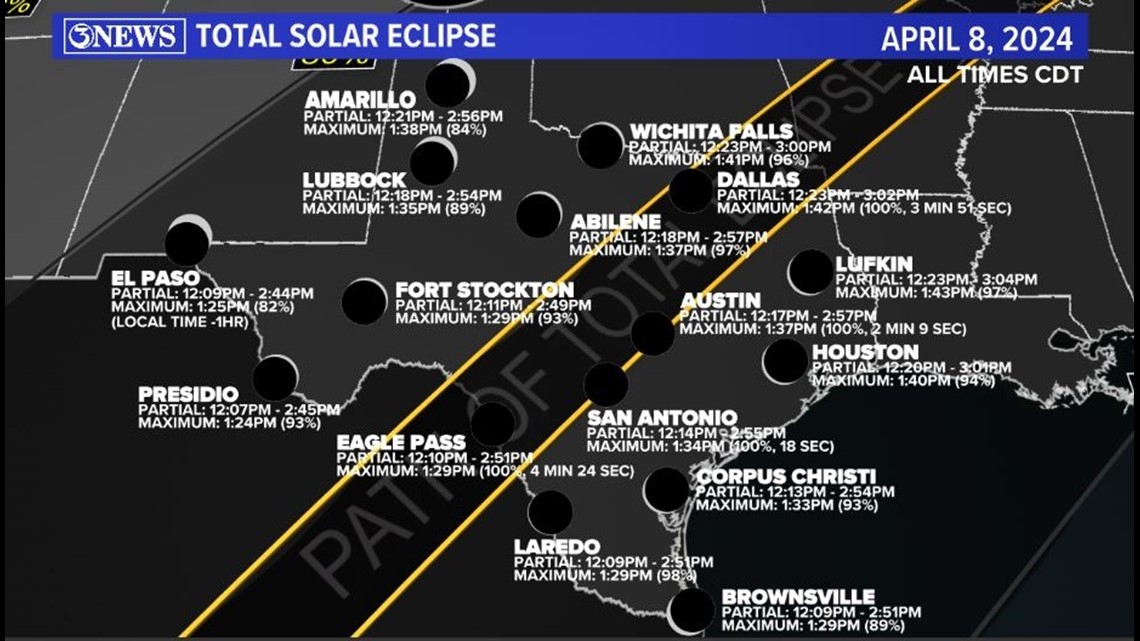
Corpus Christi and the Coastal Bend will not be in the path of totality. Again, this means those who intend to view the eclipse here at home must have protective eyewear.
The earliest partial eclipse start time will be in Hebbronville at 12:10PM, and the latest end time will be across our northeastern communities at 2:55PM.
The highest coverage will be in Freer at 96.9%. George West follows close behind with an expected coverage of 96.8%. Corpus Christi's coverage will be 92.9%.

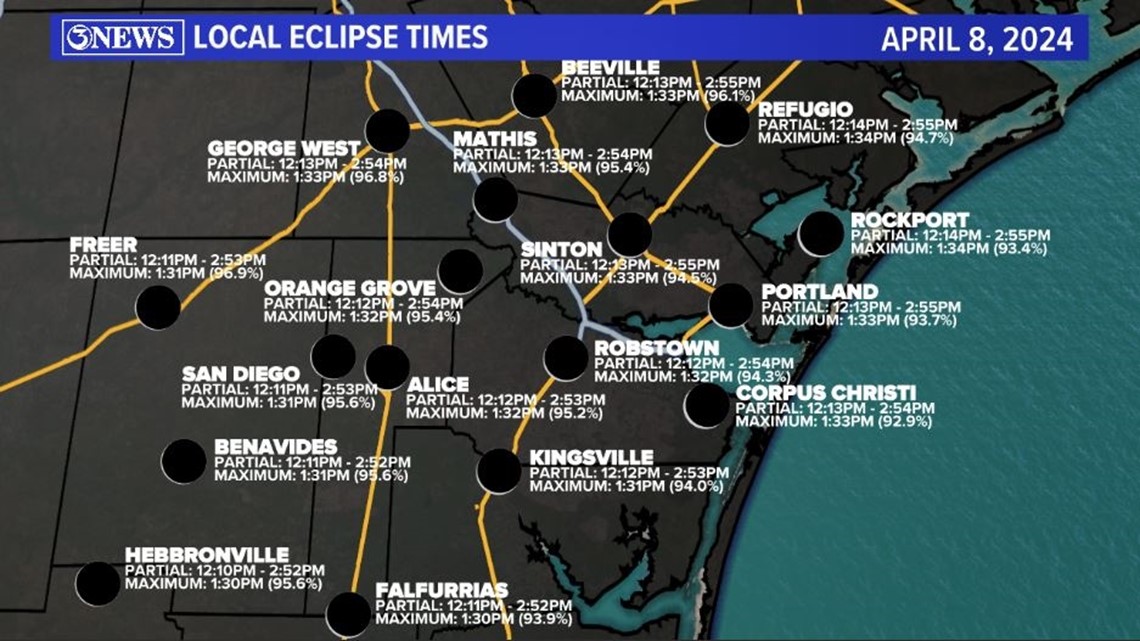
In Corpus Christi, the partial eclipse will begin at 12:13PM and ends at 2:54PM, lasting for 2 hours and 41 minutes.
While we will not experience totality, our maximum eclipse in Corpus Christi will occur at 1:33PM.
Total Solar Eclipse Timeline (Corpus Christi):
12:13PM - Partial eclipse begins
12:43PM - Half of the Sun is obscured
1:33PM - Maximum eclipse (92.9% coverage)
2:13PM - Half of the Sun is obscured
2:54PM - Partial eclipse ends

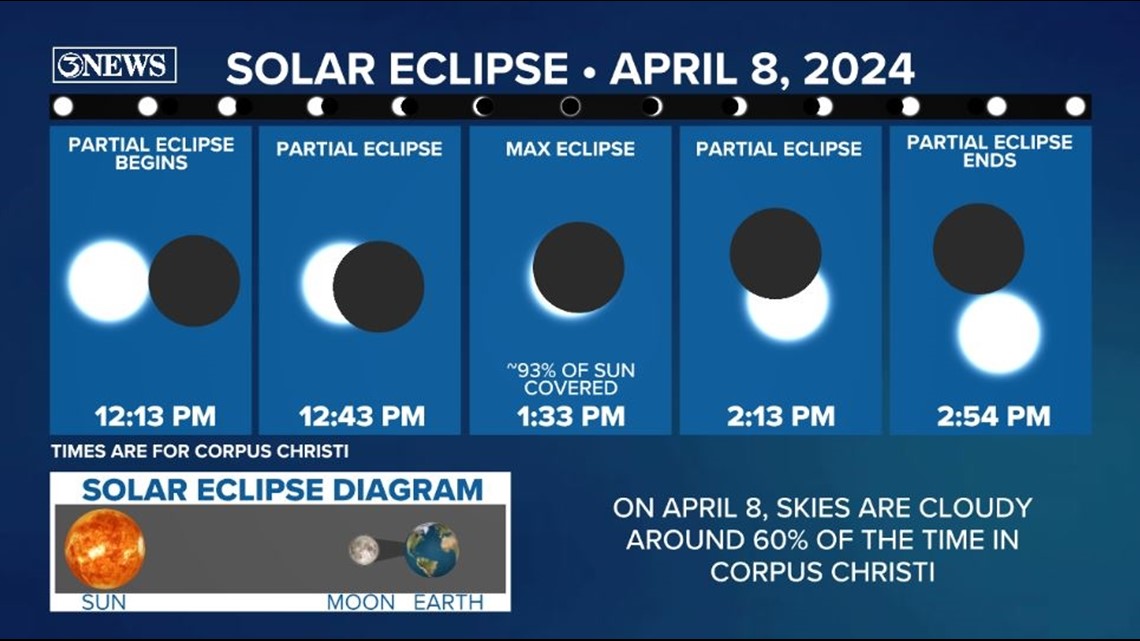
You can look up any city here, on NASA's website.


